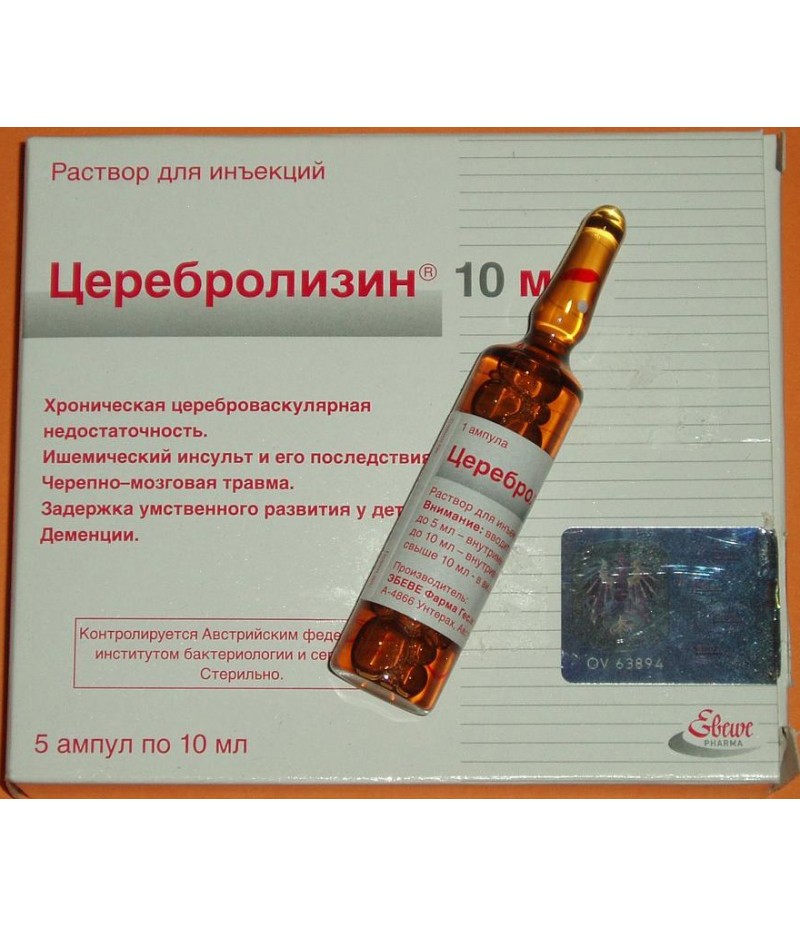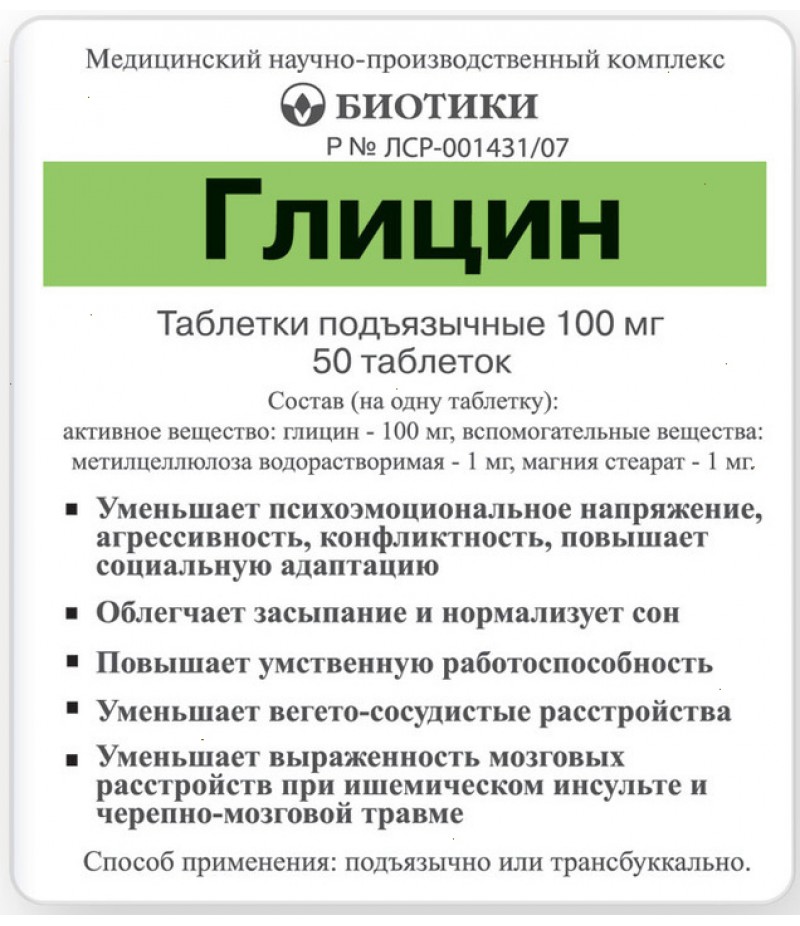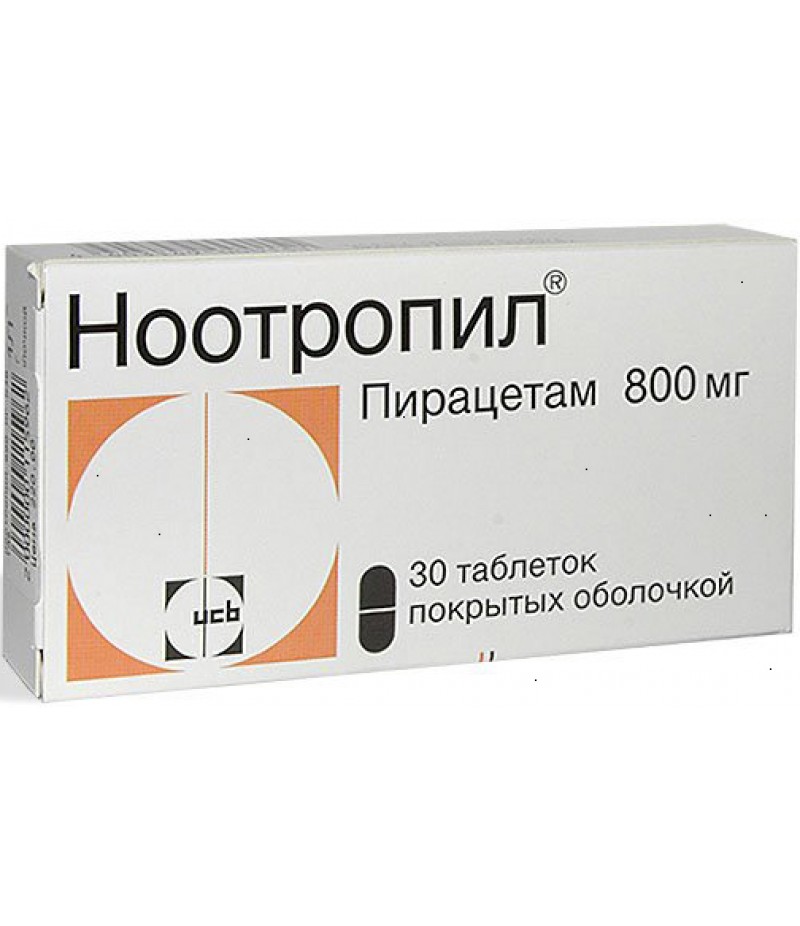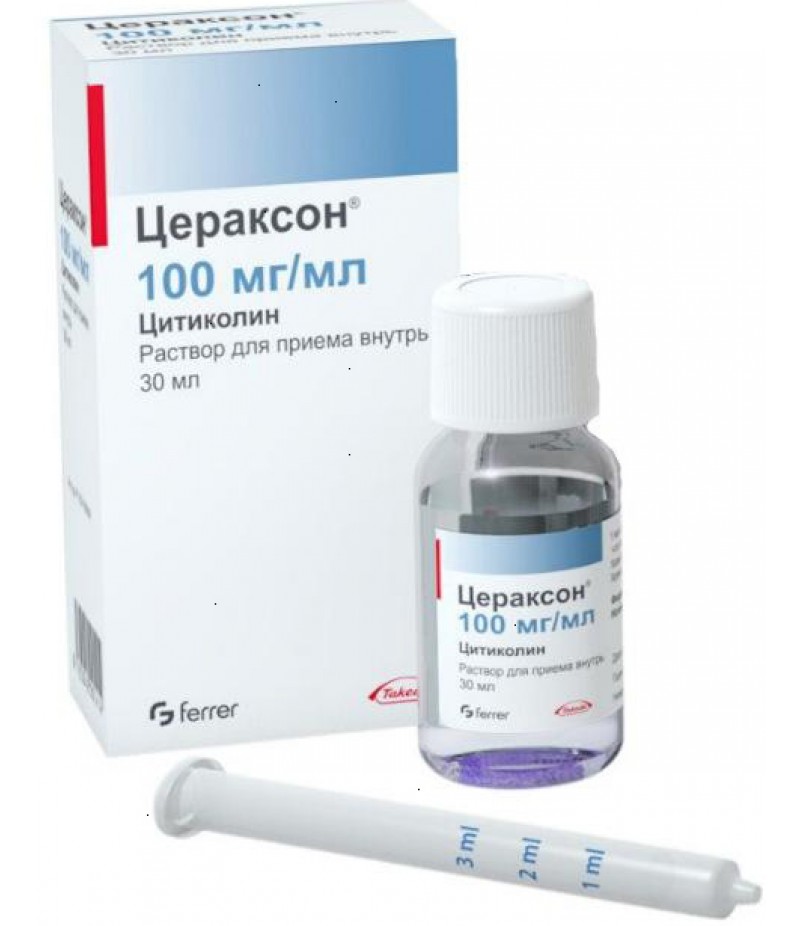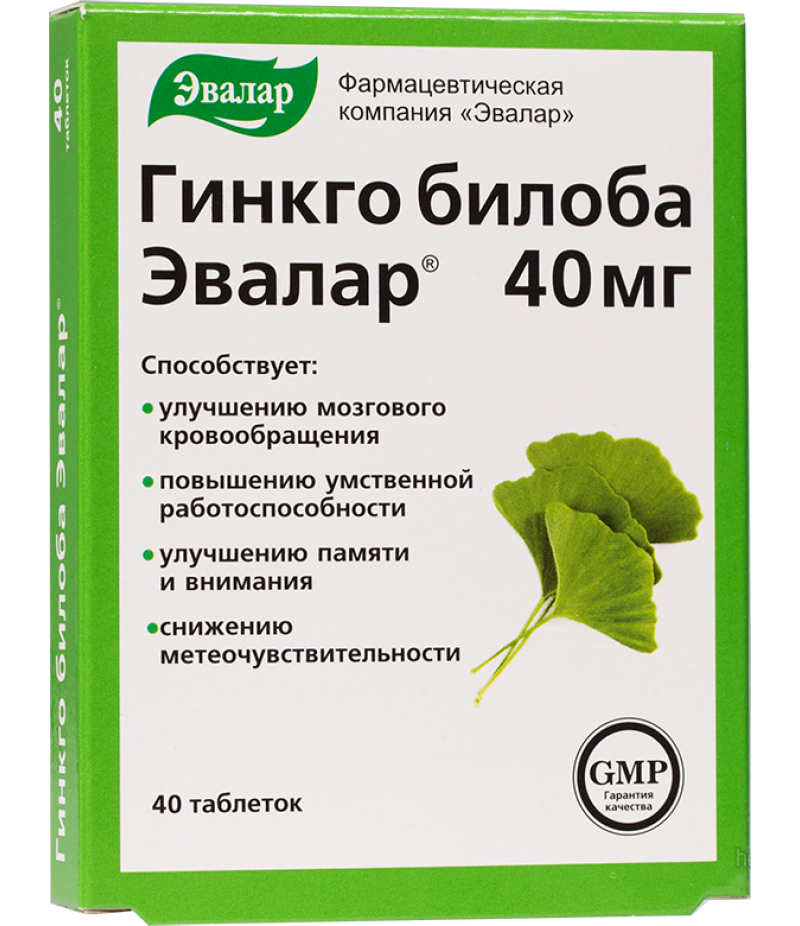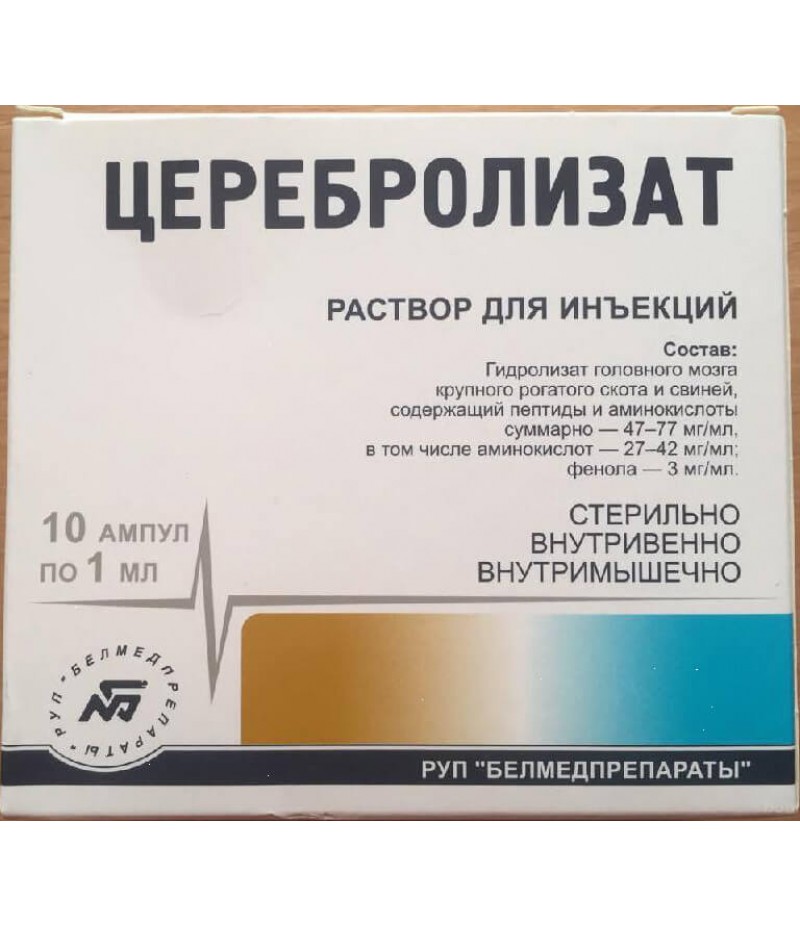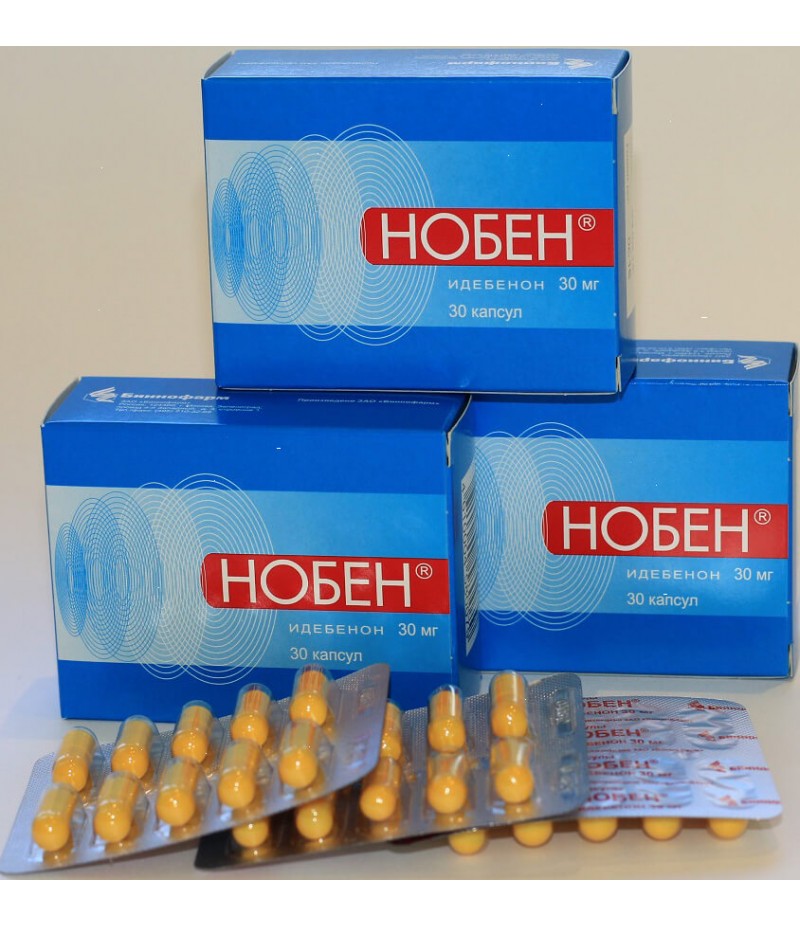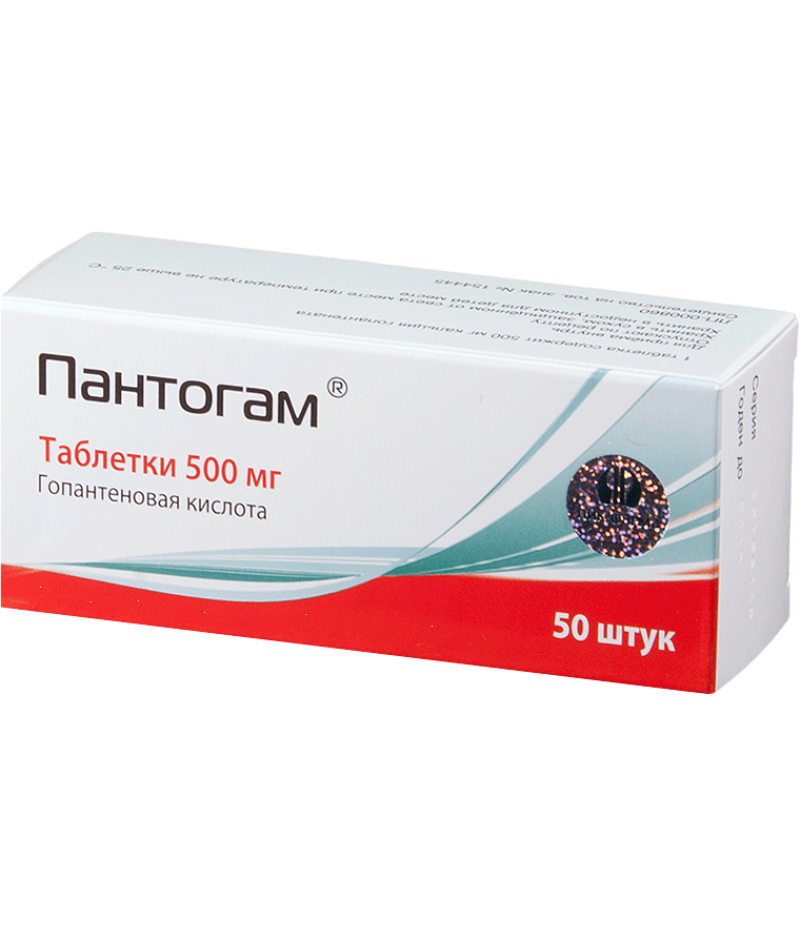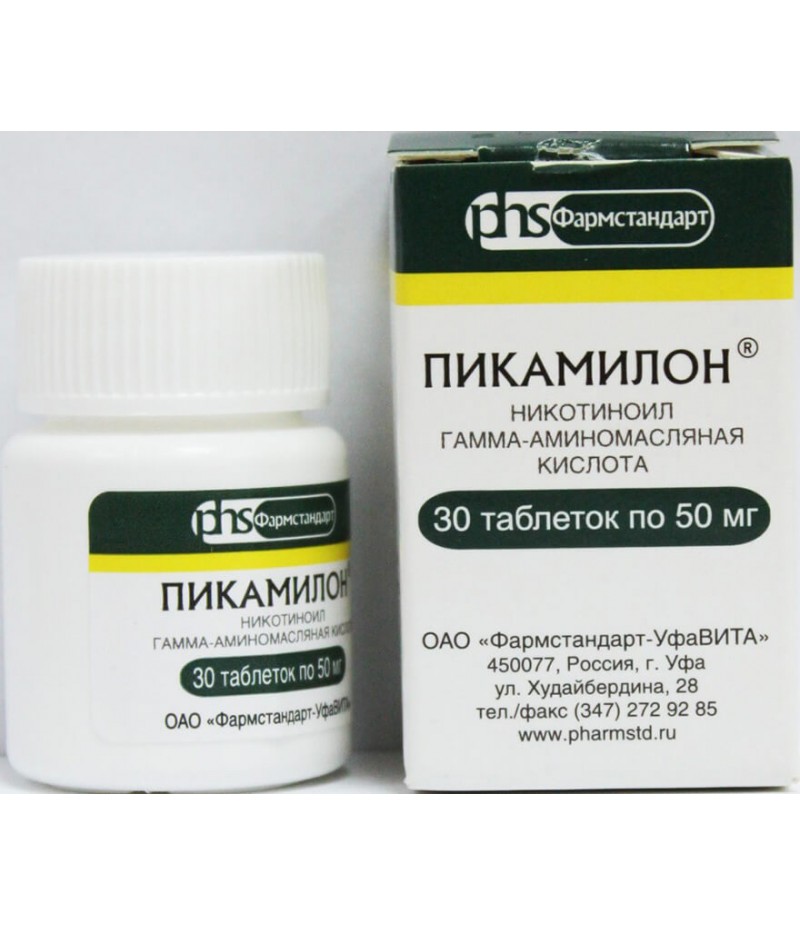Cerebrolysin solution for inj. 10ml amps #5
- $61.99
- 2 or more $59.50
- 3 or more $58.80
- Availability:In Stock
Cerebrolysin instruction for useYou can buy Cerebrolysin hereCompositionOne milliliter of the solution contains 215.2 mg of Cerebrolysin concentrate (a peptide product derived from the porcine brain) and auxiliary components: caus..
Cerebrolysin instruction for use
You can buy Cerebrolysin here
Composition
One milliliter of the solution contains 215.2 mg of Cerebrolysin concentrate (a peptide product derived from the porcine brain) and auxiliary components: caustic soda (Natrii hydroxidum), water for injection (Aqua pro injectionibus).
Form of issue
The drug is available in the form of an injection solution with a 5% concentration. The drug is delivered to the pharmacies in the capsules (Cerebrolysin 5 ml No. 5, 1 ml No. 10, 2 ml No. 10, 10 ml No. 5) and in bottles of brown glass with a fluoropolymer coating with a volume of 30 or 50 ml, sealed with a rubber stopper.
You should know that Cerebrolysin is not available in tablets.
pharmachologic effect
The drug is a stimulant of neurometabolic processes (has nootropic effect).
The deproteinized hydrolysed substance of the brain of pigs stimulates the processes of cell differentiation, improves the functional state of the cells of the nervous system and activates the mechanisms of protection and renewal.
Experiments conducted on animals showed that the biologically active amino acids and peptides contained in Cerebrolysin directly influence neuronal and synaptic plasticity, which in turn contributes to the improvement of higher cerebral functions.
Pharmacodynamics and pharmacokinetics
As a result of studies using models of cerebral cerebral ischemia, it was possible to establish that the use of the drug allows:
to reduce a heart attack;
prevent the development of edema;
stabilize microcirculation;
normalize cognitive and neurological disorders;
double the survival rates.
Based on studies using models of Alzheimer's disease, it was possible to draw the following conclusion: in addition to the fact that the drug has a direct effect on neurons, it also contributes to an increase in the number of molecules transporting glucose through the BBB (hematoencephalic barrier), and as a result, compensates for the critical energy deficiency in the body.
Quantitative analysis of encephalograms of healthy people and patients diagnosed with vascular dementia showed that against the background of the use of the drug Cerebrolysin:
significantly increases the neuronal activity (indicators of activity are dose-dependent);
objectively improve the higher brain functions;
increases the ability to self-service and perform daily tasks (as a consequence - the patient needs less care for extraneous care);
The drug has neurotrophic activity, which allows to significantly slow down, and in some cases stop the progression of neurodegenerative processes.
During the experiments, it was found that Cerebrolysin does not provoke the formation of antibodies or the development of anaphylactic reactions, does not affect the immune system, does not stimulate the histamine receptors and does not affect the hemagglutination of erythrocytes.
Since the proteolytic peptide fraction derived from the porcine brain includes short biologically active peptides similar or identical to those produced in the body, it is not possible to perform an accurate pharmacokinetic analysis of the preparation.
Based on the data on the pharmacodynamics of the drug, it was concluded that after a single administration of the drug, the hydrotrophic activity of the hydrolyzate in the blood plasma is determined during 24 hours.
The components of Cerebrolysin have the ability to penetrate the BBB. Preclinical in vivo studies have established an identical pharmacodynamic effect of the drug on the central nervous system when it is introduced into the ventricles of the brain and peripheral administration. These studies are indirect confirmation of the ability of Cerebrolysin to pass through the cell membrane of the BBB.
Indications for use of Cerebrolysin
Indications for the use of Cerebrolysin are:
organic lesions, metabolic disorders and degenerative diseases of the NS (in particular Alzheimer's disease);
complications developed against a background of a stroke;
brain trauma and their consequences (conditions after neurosurgical operations, suffered brain concussions and closed traumatic brain injury);
retarded mental development in children;
mental disorders, which are accompanied by memory impairment, absent-mindedness, etc.
Contraindications
The drug is contraindicated for hypersensitivity to its components, patients suffering from epileptic seizures, with severe violations of renal function.
Side effects
In rare cases, Cerebrolysin injections can provoke:
loss of appetite;
depressive conditions;
apathy;
general weakness;
arterial hypo- or hypertension;
hyperventilation syndrome;
the appearance of dyspnea;
chest pain;
increased fatigue;
the appearance of influenza-like symptoms.
Sometimes the therapeutic effect can be accompanied by agitation - a strong emotional arousal with manifestations of aggression, confusion of consciousness, insomnia.
Too fast administration of the drug can cause disorders of the nervous system, skin and subcutaneous tissues: dizziness, tremors, drowsiness, headache, heat, sweating, itching and redness of the skin, rashes on the skin (including the appearance of maculopapular rash ), hives.
In isolated cases:
hypersensitivity reactions or allergic reactions, angioedema, anaphylactic shock, chills and fever;
generalized epileptic seizures;
increased convulsive activity;
a feeling of one's own palpitation, tachycardia, pain in the heart, arrhythmia (similar symptoms occurred with too rapid administration of the drug);
dyspepsia;
nausea and vomiting;
constipation or diarrhea;
reactions at the injection site (erythema, burning, local inflammatory reactions);
painful sensations in the neck, back (in the lower part of it), limbs.
Since the drug is often used to treat elderly people, some of the side effects that occurred during the clinical trials may not have a causal relationship with the administration of Cerebrolysin (most of them occur in this category of patients not only against the background of the drug).
Some of the identified side effects occurred with the same frequency both in patients undergoing treatment with the drug and in patients taking placebo (changes in blood pressure, tremor, nausea, lethargy, dizziness, dyspnea, tremor, diarrhea).
Cerebrolysin injections: instructions for use (Method and dosage)
The drug is intended for intravenous and intramuscular administration.
In / in Cerebrolysin is administered in a pure form in a dose of 5 to 10 ml. If a dose of 10 to 50 ml is given to the patient (the maximum allowable dose), the solution should be administered exclusively by slow intravenous infusion after preliminary dilution to 100 ml with one of the standard solutions: Ringer's solution, isotonic NaCl solution, 5% glucose solution.
According to the instructions for the use of Cerebrolysin, the drug remains physically and chemically stable during the day in diluted form at room temperature and in unprotected from sunlight, but from the microbiological point of view the solution for infusions should be administered immediately after preparation.
The duration of treatment, as a rule, is from 10 to 20 days (assuming daily administration of the drug).
One-time administration of the maximum dose of the drug (50 ml) is allowed, but the use of Cerebrolysin is more effective.
The use of adequate dosages of the drug, as well as the correct choice of the method of its administration, is of fundamental importance for achieving the clinical effect of therapy.
Recommended daily doses:
from 5 to 30 ml - with the degradation of cognitive function, organic pathologies and metabolic disorders of the brain;
from 10 to 50 ml - to eliminate the consequences of a stroke;
from 10 to 50 ml - for the treatment of brain injuries and their consequences.
In neurological diseases, children are given injections with the introduction of 1 to 2 ml of the solution to the patient.
The recommended dose for children under the age of six months is 0.1 ml per kilogram of body weight. The maximum daily dose for patients of this age group should not exceed 2 ml.
The effectiveness of treatment increases with each repeated course. Treatment, as a rule, continues until there is a significant improvement in the patient's condition.
When conducting an initial course, the number of introductions can be reduced to 2 or 3 times a week. Between repeated courses should maintain an interval, the duration of which should be no less than the duration of the previous course of treatment.
The manufacturer does not release the drug in tablet form, so to search for the instructions for Cerebrolysin tablets is meaningless.
Overdose
Cerebrolysin overdose cases have not been identified.
Interaction
The drug is incompatible:
with drugs capable of changing its pH (5,0-8,0);
lipid-containing preparations.
Cerebrolysin may be used with balanced solutions of amino acids, with vitamins, drugs for the treatment of heart diseases and vascular system, however, it is contraindicated to mix these drugs in one vial for infusions.
Particular attention should be given to potential pharmacological effects when used simultaneously with monoamine oxidase (MAO) inhibitors or antidepressants.
Storage conditions
The instruction recommends storing Cerebrolysin in its original packaging at a temperature of no more than 25 degrees Celsius. Keep away from children.
Shelf life
For the drug in ampoules - 5 years, in vials - 2 years from the date of release.
special instructions
The drug is administered with caution to patients with allergic (exudative-catarrhal) diathesis.
Data that the drug can increase the burden on the kidneys is not, however, it should not be administered to patients with severe forms of kidney failure.
When conducting clinical trials, there was no evidence of any drug effect on the ability to engage in activities requiring attention and speed of psychomotor reactions, as well as the ability to drive a vehicle.
However, in some cases, the likelihood of unwanted adverse reactions from the psychic sphere and the nervous system is likely to be eliminated, which in turn may temporarily disrupt the ability to drive and operate machinery.
The drug from the ampoule or vial should be taken immediately before injection or infusion. In this case, only one-time solution set from the ampoule or vial is allowed.
If sediment or foreign matter appears in the solution, or if the color of the solution changes, it is forbidden to use it. Under normal conditions, the color of the liquid is amber.
Cerebrolysin analogues
Cavinton, Nootropil, Ceraxon, Ginkgo Biloba, Glycine, Ginkoum and others
For children
In pediatric practice, Cerebrolysin is used in the presence of well-founded indications.
During pregnancy (and lactation)
The animal studies did not reveal the toxic effect of the drug on the reproductive system. However, data on how Cerebrolysin can affect the reproductive function of a person, to date, no.
In connection with this, pregnant women are appointed only in cases where there is no alternative to therapy with Cerebrolysin. If you need to undergo a course of treatment with the drug during lactation, you need to decide whether to stop breastfeeding.
Reviews about Cerebrolysin
As with any other drug, reviews of doctors and patients about Cerebrolysin can be found in a variety of ways. Moreover, many foreign experts consider it an expensive pacifier with unproven efficiency. At the same time, our doctors prescribe the drug quite often, and patients - if you believe the feedback left - often enough satisfied with the results of treatment.
For children, injections are effective if necessary to eliminate the consequences of birth trauma, with perinatal pathology of the central NS, to reduce the tension of the NA. In addition, the drug stimulates the development of the brain and speech in children who were diagnosed with "delayed speech development."
Moreover, many mothers note that the effectiveness of the drug directly depends on the correct choice of dose and duration of treatment. Some believe that Cerebrolysin works well in high dosages and in combination with a set of physiotherapy measures.
According to the parents, whose children were treated with the drug, especially marked progress in children is observed if the therapy was started before the year.
A number of negative reviews about Cerebrolysin for children is due to the fact that the injections are rather painful, expensive and have contraindications.
Reviews of adults about the drug are quite contradictory. At forums where people discuss certain medications, many positive reviews about Cerebrolysin have been left, as an effective and time-tested remedy.
Some patients say they did not notice the expected effect. However, the instruction to Cerebrolysin warns that the greatest clinical efficacy is observed after not one, but several courses of treatment.

